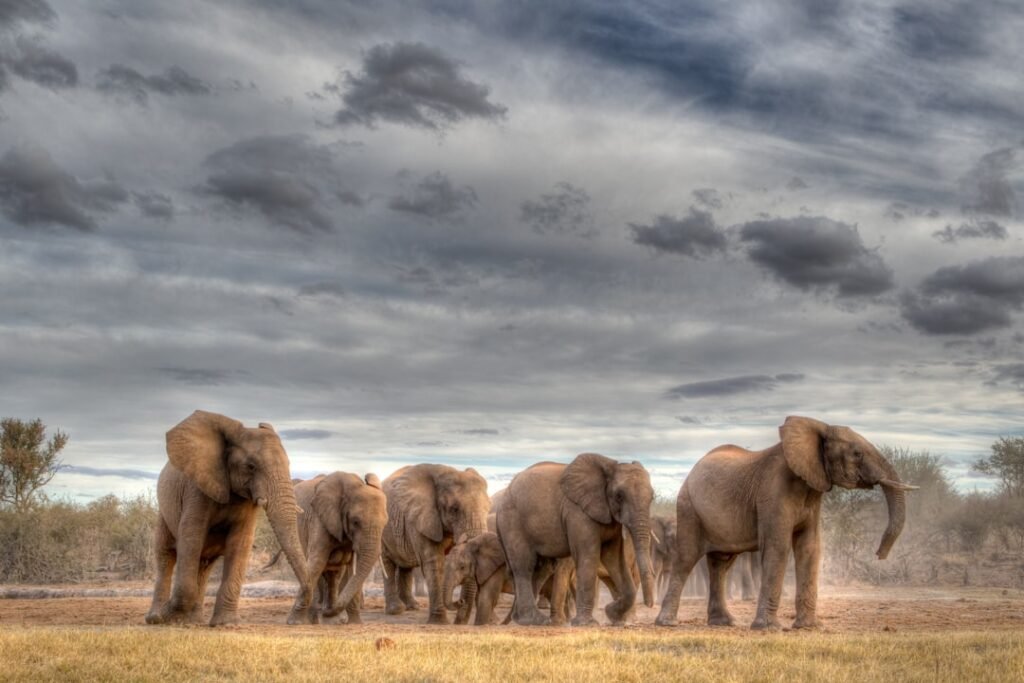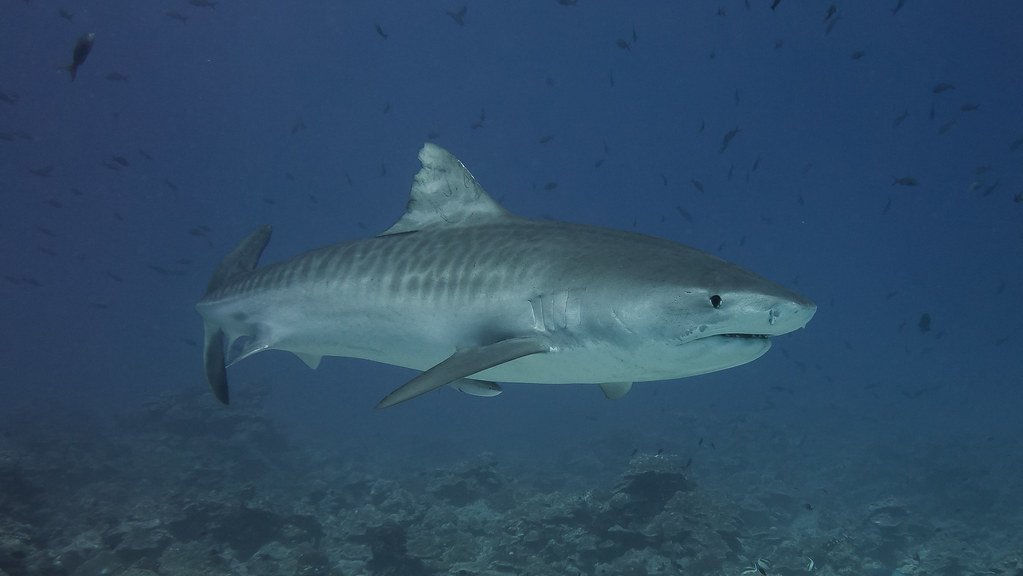On a wind-bitten beach on Alaska’s Katmai coast, a gray shape moves with tidal patience, eyes skimming the slick rocks for anything careless enough to bask too long. A sudden lunge, a spray of seawater, and the shoreline erupts – proof that wolves here don’t just chase hoofed shadows in the timber. Across Alaska, biologists and local observers have been piecing together a more surprising picture: wolves that borrow clues from birds, work the rhythm of the tides, and capitalize on other carnivores’ chaos. The old story of wolf and elk is still true, but a newer, saltier chapter is unfolding. And it’s changing how we think about cooperation in the wild.
The Hidden Clues

Here’s the jolt: Alaska’s coastal wolves have been documented hunting marine mammals, while inland packs are shadowed by ravens that often arrive at kills within moments. That might sound like coincidence, but repeated observations suggest something more systematic – wolves responding to cues from other species, and those species in turn relying on wolves to unlock meals they can’t access alone. When a flock of ravens boils over a valley, wolves sometimes alter course, as if reading the sky like a news ticker. On the coast, low tide acts like a daily invitation, revealing haul-outs where sea otters or seals suddenly become reachable. None of this is a fairy tale of interspecies friendship; it’s a pragmatic alliance stitched together by hunger, habit, and opportunity.
I still remember a winter morning on the Kenai when ravens burst into a clattering chorus above a frozen creek and everything went still for a beat. That noise wasn’t random; it was a flare in the cold air, the kind of broadcast that predators and scavengers learn to interpret. The more you listen, the less the landscape feels quiet and the more it feels like a room full of whispered directions. Alaska’s wolves, sharp students of patterns, seem to be listening. And when they act on those hints, the results can look uncannily like teamwork.
What Scientists Are Actually Seeing

In Katmai National Park and Preserve between 2016 and 2020, biologists recorded wolves successfully hunting sea otters and harbor seals, especially during low tides when haul-outs are exposed. Remote cameras and shoreline surveys showed repeated visits timed to tidal windows, pointing to a learned strategy rather than a one-off chance. Elsewhere, DNA from wolf scats has revealed significant marine inputs to diets in certain coastal packs, alongside crabs, mussels, and other shoreline fare. Inland, ravens are a near-constant presence at wolf kills, sometimes appearing within a minute, and often in numbers large enough to matter for energy budgets. Taken together, these lines of evidence show wolves pivoting to diverse food sources while paying attention to other species’ signals.
This broadening of the hunt list doesn’t erase classic wolf behavior; it adds layers. Moose and caribou remain core prey for many packs, but the menu expands where geography allows and competitors are plentiful. The picture that emerges is less about fixed roles and more about situational alliances – ravens advertising a bonanza, wolves opening the tough hide, and the entire scavenger guild cascading in afterward. On the coast, tides and haul-out habits create predictable chokepoints that wolves exploit with patience. The science reads like a crime board: lines connecting birds, mammals, and water levels into a pattern that leaves little to chance.
Ravens: The Feathered Allies

Ravens and wolves have a long, messy history that looks suspiciously like mutualism. Ravens trail wolf packs, vocalize over carcasses, and sometimes seem to guide attention to the right valley or the right stand of trees. For ravens, the payoff is obvious – wolves tear open hides that even a heavy raven bill can’t breach, turning an impossible carcass into an open buffet. For wolves, the upside is intelligence: an airborne network that scouts beyond the line of sight and broadcasts news the instant a meal hits the ground. In some winters, observers have logged ravens at nearly every kill, often within moments, a pattern hard to dismiss as mere coincidence.
There’s a hard-nosed economic angle here that scientists keep circling back to: ravens can strip a surprising share of a large carcass, pressuring wolves to feed fast or hunt again. That tug-of-war may even shape pack behavior by making group feeding more efficient than going it alone. It’s not friendship; it’s an arms-length exchange where both sides get enough to make the dance worthwhile. Watch long enough and the choreography reveals itself – black wings describing circles overhead, gray bodies angling into the wind below. It feels like a conversation, and in ecological terms, it is.
Bears, Eagles, and Wolverines: Fellow Opportunists, Not Sidekicks

Brown bears and wolves tangle, tolerate, and sometimes just work the same neighborhood, especially on salmon streams or open tundra. Encounters documented in Katmai range from outright confrontations to wary sharing, suggesting a flexible détente shaped by season and food availability. Bald eagles, meanwhile, play the cleanup crew at many wolf kills, dropping in once the heavy lifting is done. And wolverines – the stealthy specialists – are known to shadow wolves, arriving at carcasses soon after the pack departs and occasionally while wolves are still feeding.
Let’s be blunt: these are not cozy , but they can still shift hunting outcomes. A bear blundering through alders can flush moose or caribou into motion, altering the odds for nearby wolves. A congregation of eagles or gulls can betray a hidden carcass, pulling wolves back to defend their prize or drawing them to new opportunities. Even the scent of a wolverine at a half-buried cache may change how a pack prioritizes time and risk. The lines of influence crisscross, subtle but real, producing moments that look collaborative even when no one is trying to be helpful.
From Ancient Tools to Modern Science

Today’s insights ride on a combination of old-school field craft and new technology. Camera traps stationed along tidelines turn the sea’s daily heartbeat into data, catching wolves as they slip to exposed reefs at predictable hours. DNA metabarcoding of scats reveals hidden meals – from otters to invertebrates – that leave few visible traces. Stable isotopes in hair can flag long-term reliance on marine foods, showing how deep the coastal shift runs. GPS collars fill in the movement maps, linking routes to tides, salmon runs, or raven hotspots with a precision field notes can’t match.
What makes this exciting is the way the tools converge. Tidal charts explain when wolves appear on certain islands, while video shows how they commit to the chase. Genetic signatures in scat confirm what the camera saw and how often. Layer by layer, the picture hardens from anecdote into mechanism. That is how ecology grows up – from hunches and stories to patterns and predictions that withstand a scratch test.
How Climate and Coasts Rewrite the Playbook

Coastal Alaska is a living laboratory where rising seas, shifting kelp beds, and salmon variability reshape the dinner table for predators. As sea otter numbers rebound in some regions and haul-out behavior changes with ice and storm patterns, the availability of risky but rich prey fluctuates. Wolves that learn to “read” tides and shoreline behavior get a head start, and their pups inherit both the genes and the geography. Inland, snow conditions, migration timing, and human activity influence how often wolves lean on ravens or scavenge. In a rapidly changing North, flexibility becomes the currency of survival.
There’s a flip side. Human management choices – from predator control to shoreline disturbance – can interrupt the very networks that make ecosystems resilient. If wolves are culled heavily in one area, the ripple can travel through ravens, scavengers, and even plant communities linked to carcass nutrients. On the coast, increased boat traffic or disturbance at haul-outs could shut down behaviors that took years to refine. The we’re seeing are adaptable, but not indestructible. Break enough links and the web frays.
Why It Matters

These cross-species plays are more than curiosities; they’re part of how energy and information move through Alaska’s ecosystems. Traditional wolf management models focus on wolves versus ungulates, but the coastal hunts and raven alliances insist on a bigger frame. When wolves pull food off the shore, marine nutrients travel inland through scat and carcasses, feeding everything from beetles to willows. When ravens track packs, they redistribute meat into caches that feed smaller scavengers for weeks. The system works because the participants aren’t isolated – they’re eavesdropping, responding, and improvising.
There’s also a practical lesson: conservation plans that ignore these interactions risk backfiring. Protecting a haul-out, limiting disturbance during key tides, or leaving carcasses on the landscape can support entire guilds, not just one species. Likewise, over-simplified predator control can erase behaviors that buffer ecosystems against shocks. The big takeaway is simple: manage the relationships, not just the headcounts. That’s where resilience lives.
The Future Landscape

Expect the next wave of discoveries to come from pairing movement data with sound and tide in near real time. Collars that log accelerations can flag the moment a hunt begins; acoustic arrays can track raven calls across valleys; and machine learning can stitch those feeds together to predict when and where wolves will tip from searching to striking. On the coast, finer-grained tide and wave models should reveal micro-windows when haul-outs are safest for wolves to approach. Add more noninvasive genetics, and we’ll map diet shifts to specific family lines and seasons.
The challenges are clear: funding long-term projects, safeguarding sensitive haul-outs, and coordinating across state and federal lands. Ethical questions matter too – how much should we interfere where behaviors are still being mapped? The wins could be huge, from better fisheries–wildlife planning to smarter tourism guidelines that reduce disturbance during critical windows. If we get it right, Alaska could become the world’s case study in managing not just species, but the information networks that connect them.
How You Can Help

Start local: support Alaska-based research groups and parks that maintain camera traps, analyze scat, and train the next field crews. If you’re visiting the coast, give haul-outs and feeding wildlife a wide berth; a few quiet minutes now can preserve years of learned behavior. At home, back policies that keep carcasses and natural nutrient flows on the landscape rather than removing them “for tidiness.” Consider volunteering with community science projects that log raven movements, track tide–wildlife interactions, or report disturbances. Curiosity is a conservation tool – share what you learn with neighbors and kids, and ask for better science-based management where you live. Ready to look up when the ravens start shouting?

Suhail Ahmed is a passionate digital professional and nature enthusiast with over 8 years of experience in content strategy, SEO, web development, and digital operations. Alongside his freelance journey, Suhail actively contributes to nature and wildlife platforms like Discover Wildlife, where he channels his curiosity for the planet into engaging, educational storytelling.
With a strong background in managing digital ecosystems — from ecommerce stores and WordPress websites to social media and automation — Suhail merges technical precision with creative insight. His content reflects a rare balance: SEO-friendly yet deeply human, data-informed yet emotionally resonant.
Driven by a love for discovery and storytelling, Suhail believes in using digital platforms to amplify causes that matter — especially those protecting Earth’s biodiversity and inspiring sustainable living. Whether he’s managing online projects or crafting wildlife content, his goal remains the same: to inform, inspire, and leave a positive digital footprint.




